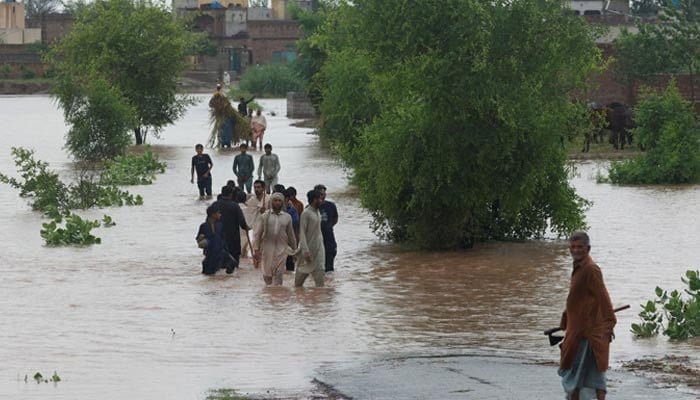Widespread Flooding Causes Devastation Across the Country
Recent floods across Pakistan have inflicted severe economic and human losses, with official government reports estimating damages at approximately Rs822 billion. The disaster has affected more than 6.5 million people across 70 districts, making it one of the most damaging flood events in recent years.
The floods have disrupted livelihoods, destroyed property, and strained essential services in multiple provinces. The scale of destruction has prompted urgent government intervention and renewed calls for improved disaster management and climate resilience strategies.
Punjab Among the Hardest-Hit Provinces
Among the affected regions, Punjab emerged as the most severely impacted province, followed closely by Khyber Pakhtunkhwa, Sindh, and Balochistan. Thousands of villages and towns were inundated, resulting in massive displacement and extensive agricultural damage.
Official figures indicate that 229,763 homes were damaged during the floods. Of these, 59,258 were completely destroyed, while 170,505 sustained partial damage. The losses to infrastructure—such as roads, bridges, and irrigation systems—have significantly hampered transportation and relief efforts.
Human Toll and Government Response
The floods claimed 1,037 lives and left 1,067 individuals injured. In response to the tragedy, the federal government announced a relief package of Rs2 billion to compensate the families of victims and assist those whose homes were damaged. Provincial administrations have also launched coordinated relief operations to provide food, shelter, and medical care to displaced families.
Rescue teams, supported by the army and local volunteers, continue to evacuate residents from high-risk areas. The National Disaster Management Authority (NDMA) is overseeing the rehabilitation process and conducting damage assessments to ensure that aid reaches those most in need.
Economic Impact and Sectoral Losses
The floods have had a far-reaching impact on Pakistan’s economy, particularly in the agriculture and infrastructure sectors. Preliminary estimates of losses, initially pegged at Rs744 billion, have now been revised upward to Rs822 billion as more data becomes available.
Agriculture, a cornerstone of Pakistan’s economy, suffered massive setbacks. Standing crops, including wheat, rice, sugarcane, and cotton, were either submerged or completely destroyed in several districts. The loss of farmland and livestock has affected millions of farmers and poses a threat to food security and export earnings in the coming months.
Infrastructure damage has also been extensive. Floodwaters washed away roads, bridges, and electricity networks, disrupting supply chains and slowing down regional connectivity. Reconstruction and repair efforts are expected to require substantial financial and technical support.
The Road to Recovery
As Pakistan begins the long journey toward recovery, experts emphasize the importance of climate adaptation, early warning systems, and sustainable flood management practices. The recurring pattern of devastating floods highlights the urgent need for stronger water management policies and community preparedness programs.
The government’s relief and rehabilitation initiatives are ongoing, but restoring affected areas and rebuilding infrastructure will take considerable time and resources. The disaster stands as a stark reminder of the growing impact of climate change on vulnerable regions and the pressing need for resilience-driven development.
Topics #Disaster Management Pakistan #Economic Loss Assessment #Pakistan Floods 2025 #trending pakistan




